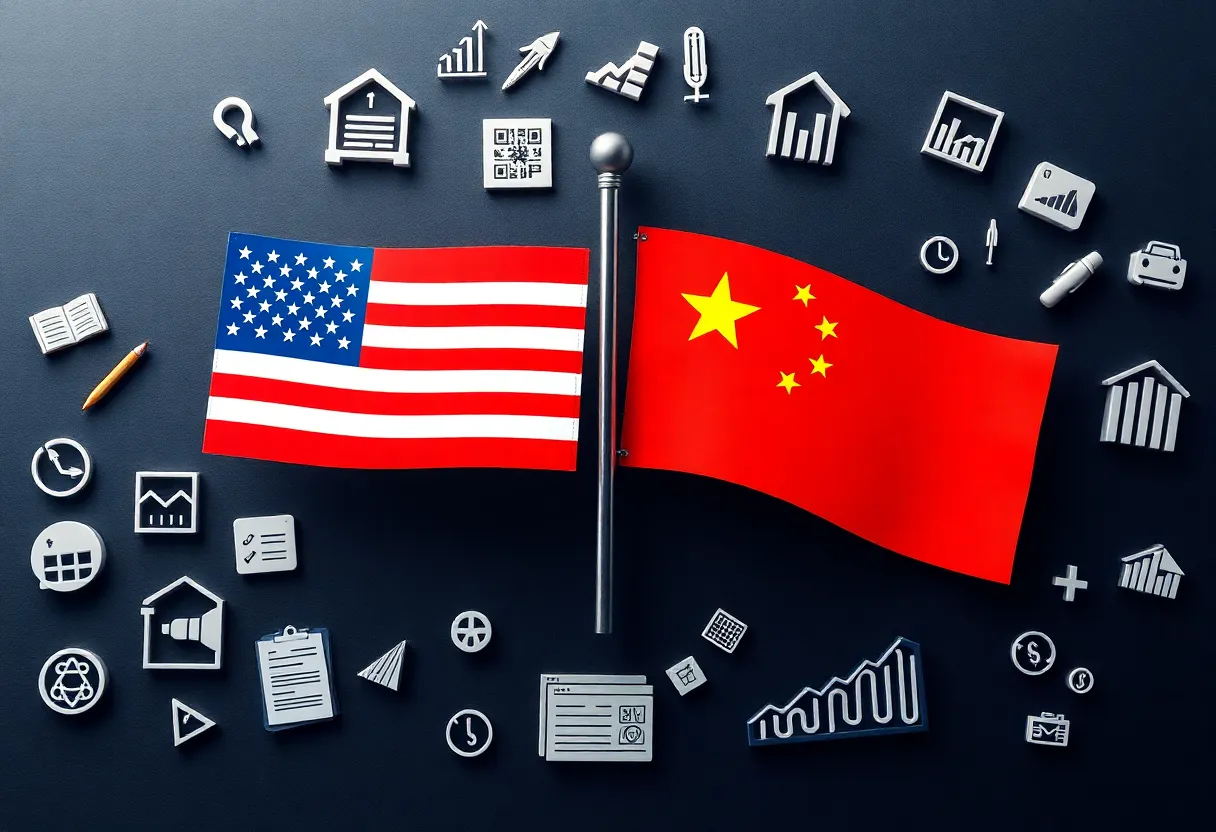News Summary
China is considering engaging in trade negotiations with the United States amid ongoing trade tensions. The push for dialogue has been sparked by recent outreach from U.S. officials, although China insists that all unilateral tariffs must be lifted before talks can commence. Despite the high tariffs imposed by both nations, there appear to be efforts to ease the economic impact, with market reactions indicating some optimism. Analysts caution that reaching a comprehensive deal will be complex, yet there are signs of progress as both sides navigate their mutual interests.
China Takes a Closer Look at U.S. Trade Proposals
There’s been a buzz lately in the world of international trade as China is weighing the possibility of kicking off negotiations with the United States. This news comes straight from China’s ministry of commerce, indicating that there might be a chance to ease up the ongoing trade tensions that have been affecting both economies.
The Push for Negotiations
Senior officials in the U.S. have reached out to their Chinese counterparts several times in recent weeks. They’re keen to jumpstart discussions surrounding tariffs, which have been a major sticking point. However, China has made it clear that it won’t be sitting at the negotiating table unless the U.S. gets rid of all unilateral tariffs first. This demand sets the tone for what could be a tricky conversation.
Understanding the Impact of Tariffs
Let’s not forget, tariffs imposed by U.S. President Donald Trump have soared to an eye-watering 145% on certain imported goods from China. Naturally, this led China to push back with their own tariffs, which stand at 125%. These tariffs don’t just create headlines; they have real implications for businesses and consumers alike. Some U.S. companies are already starting to feel the pinch as operating costs rise because of these trade barriers.
Interestingly, despite this climate of tension, both countries have started to offer exemptions on specific products to soften the economic blow. This move seems to reflect a mutual understanding that a little cooperation could go a long way in preserving economic stability.
Market Reactions and Economic Indicators
Following China’s recent announcement about assessing U.S. proposals, there were noticeable shifts in the market. The offshore yuan saw a modest rise of 0.14% against the U.S. dollar, while Hong Kong’s Hang Seng Index climbed by a robust 1.6%. It’s almost as if investors are eager for some positive movement in the trade talks!
Although both sides have been known to claim they’re making progress in talks, there’s been some back and forth about whether negotiations are truly underway. Neither side appears to want to be seen as the first to give in, which adds to the layers of complexity in this trade puzzle.
Challenges Ahead
Analysts are cautioning that crafting a comprehensive trade deal won’t be a walk in the park. The stakes are high, and both countries are understandably hesitant to make significant concessions. For instance, some experts have noted that China’s cautious approach to discussions is a direct response to Trump’s unpredictable nature. This uncertainty leaves many wondering how negotiations might unfold.
There is a glimmer of hope, though. U.S. officials, such as Treasury Secretary Scott Bessent, have talked about easing tensions, suggesting that talks could potentially follow a multi-staged approach. White House economic adviser Kevin Hassett has also commented that discussions are happening, and the recent easing of Chinese duties on some U.S. products could hint at meaningful progress.
The Bigger Picture
As this situation plays out, there’s mounting pressure on Trump’s administration to de-escalate the trade conflict. With signs pointing to potential recession risks in the domestic economy, the urgency for a resolution has never been more pronounced.
However, achieving a lasting truce might be more feasible than a comprehensive agreement, especially given the current atmosphere of “constructive ambiguity.” This allows both countries to engage in talks while claiming victories on their respective fronts. Observers are keeping a close watch, as any movement toward negotiations could pave the way for reduced tensions in the long run.
Ultimately, the next steps in this trade saga will depend heavily on the mutual interests of both nations. Having a clear understanding of their economic security needs while striving for a collaborative approach will be crucial. It’s a delicate dance, but let’s hope they find some common ground!
Deeper Dive: News & Info About This Topic
- BBC News
- Wikipedia: Trade
- Reuters
- Google Search: US-China trade relations
- CNN
- Encyclopedia Britannica: International Trade
- Bloomberg
- Google News: China US trade talks

Author: STAFF HERE ORLANDO WRITER
ORLANDO STAFF WRITER The ORLANDO STAFF WRITER represents the experienced team at HEREOrlando.com, your go-to source for actionable local news and information in Orlando, Orange County, and beyond. Specializing in "news you can use," we cover essential topics like product reviews for personal and business needs, local business directories, politics, real estate trends, neighborhood insights, and state news affecting the area—with deep expertise drawn from years of dedicated reporting and strong community input, including local press releases and business updates. We deliver top reporting on high-value events such as Orlando International Fringe Theatre Festival, Megacon Orlando, and Central Florida Fair. Our coverage extends to key organizations like the Orlando Economic Partnership and Hispanic Chamber of Commerce Metro Orlando, plus leading businesses in leisure and hospitality that power the local economy such as Walt Disney World Resort, AdventHealth, and Universal Orlando. As part of the broader HERE network, including HEREJacksonville.com, HEREPetersburg.com, HERETallahassee.com, and HERETampa.com, we provide comprehensive, credible insights into Florida's dynamic landscape.




